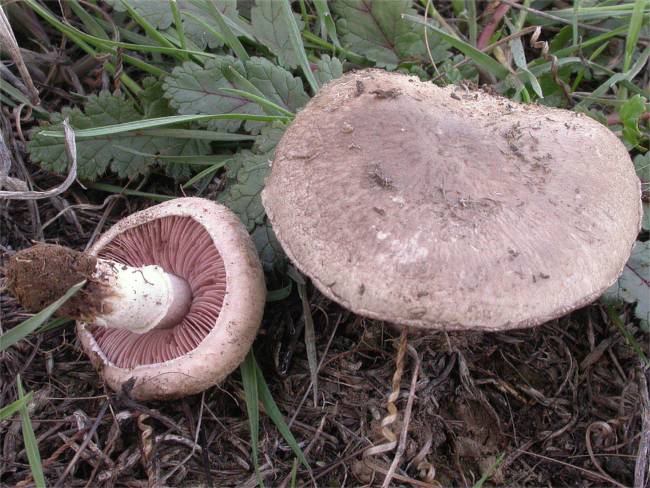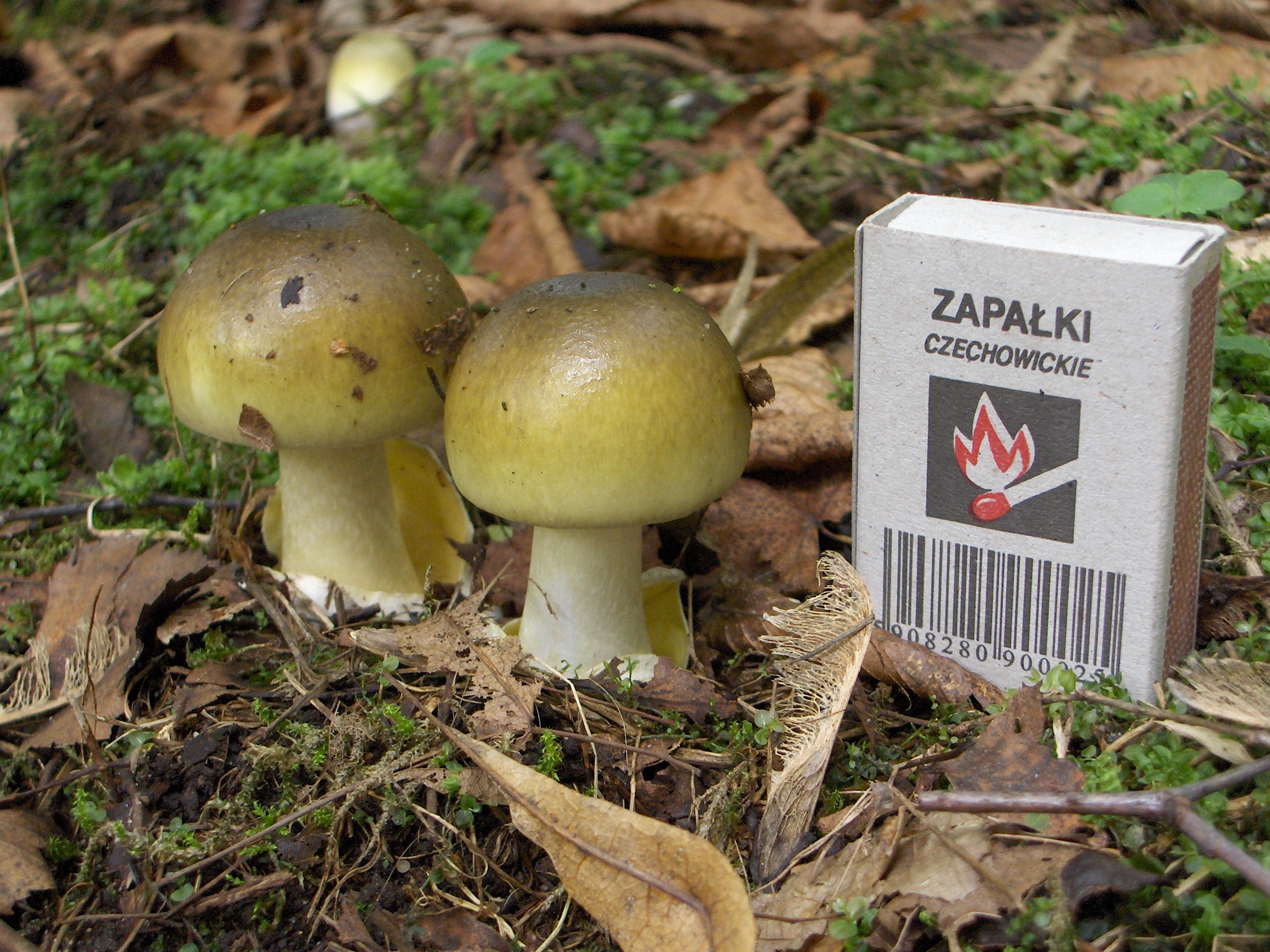|
Mushroom Hunting
Mushroom hunting, mushrooming, mushroom picking, mushroom foraging, and similar terms describe the activity of gathering mushrooms in the wild. This is typically done for culinary purposes, although medicinal and psychotropic uses are also known. Expert analysis is required to distinguish between useful and poisonous species. The practice is popular throughout most of Eurasia and Australia, as well as in temperate regions of North America. Seasons Mushrooms generally begin to fruit when it is both warm and moist in their region. In the North American Pacific Northwest, species shortly occur from spring to summer, but are most common in autumn. In the Southwestern United States, mushrooms can be found during the winter rains and spring. In the Midwest and Northeast U.S., they can be found from late April until the frosts of autumn. In the Colorado Rockies, they are best collected in July and August. They can be found through winter on the Gulf Coast. Location Particular ... [...More Info...] [...Related Items...] OR: [Wikipedia] [Google] [Baidu] |
Mushroom Picking 01
A mushroom or toadstool is the fleshy, spore-bearing Sporocarp (fungi), fruiting body of a fungus, typically produced above ground on soil or another food source. ''Toadstool'' generally refers to a poisonous mushroom. The standard for the name "mushroom" is the cultivated white button mushroom, ''Agaricus bisporus''; hence, the word "mushroom" is most often applied to those fungi (Basidiomycota, Agaricomycetes) that have a stem (Stipe (mycology), stipe), a cap (Pileus (mycology), pileus), and gills (lamellae, sing. Lamella (mycology), lamella) on the underside of the cap. "Mushroom" also describes a variety of other gilled fungi, with or without stems; therefore the term is used to describe the fleshy fruiting bodies of some Ascomycota. The gills produce microscopic Spore#Fungi, spores which help the fungus spread across the ground or its occupant surface. Forms deviating from the standard Morphology (biology), morphology usually have more specific names, such as "bolete", " ... [...More Info...] [...Related Items...] OR: [Wikipedia] [Google] [Baidu] |
Agaricus
''Agaricus'' is a genus of mushroom-forming fungi containing both edible and poisonous species, with over 400 members worldwide and possibly again as many disputed or newly discovered species. The genus includes the common ("button") mushroom ('' A. bisporus'') and the field mushroom ('' A. campestris''), the dominant cultivated mushrooms of the West. Taxonomy Several origins of genus name ''Agaricus'' have been proposed. It possibly originates from ancient Sarmatia Europaea, where people Agari, promontory Agarum and a river Agarus were known (all located on the northern shore of Sea of Azov, probably, near modern Berdiansk in Ukraine). Note also Greek , agarikón, "a sort of tree fungus" (There has been an ''Agaricon'' Adans. genus, treated by Donk in ''Persoonia'' 1:180.) For many years, members of the genus ''Agaricus'' were given the generic name ''Psalliota'', and this can still be seen in older books on mushrooms. All proposals to conserve ''Agaricus' ... [...More Info...] [...Related Items...] OR: [Wikipedia] [Google] [Baidu] |
Tuber (fungus)
''Tuber'' is a genus in the fungus, fungal family Tuberaceae, with estimated molecular dating to the end of the Jurassic period (156 Mya). It includes several species of truffles that are highly valued as delicacies. New discoveries In 2015, a new species ''Tuber petrophilum'' (close relative to ''Tuber melanosporum'' and ''Tuber brumale'') was discovered in the Dinaric Alps (Southeastern Europe, Serbia). In 2016, two new species were discovered in Brazil. ''Tuber floridanum'' (with the commercial name Trufa Sapucaya meaning 'The last Guaraní people, Guarany breath') and ''Tuber brennemanii'' grow in association with pecan rootlets. See also * List of Tuber (fungus) species, List of ''Tuber'' (fungus) species References External links * Tuber (fungus), Pezizales genera {{Pezizomycetes-stub ... [...More Info...] [...Related Items...] OR: [Wikipedia] [Google] [Baidu] |
Hygrophorus
''Hygrophorus'' is a genus of agarics (gilled mushrooms) in the family Hygrophoraceae. Called "woodwaxes" in the UK or "waxy caps" (together with '' Hygrocybe'' species) in North America, basidiocarps (fruit bodies) are typically fleshy, often with slimy caps and lamellae that are broadly attached to decurrent. All species are ground-dwelling and ectomycorrhizal (forming an association with living trees) and are typically found in woodland. Around 100 species are recognized worldwide. Fruit bodies of several species are considered edible and are sometimes offered for sale in local markets. Taxonomy History ''Hygrophorus'' was first published in 1836 by Swedish mycologist Elias Magnus Fries. The generic name is derived from the Greek ῦγρὁς (= moist) + φόρος (= bearer), with reference to the slimy caps found in many species. Fries (1849) subsequently split the genus into three subgenera: ''Limacium'', ''Camarophyllus'', and '' Hygrocybe''. The last of these is now ... [...More Info...] [...Related Items...] OR: [Wikipedia] [Google] [Baidu] |
Entoloma
''Entoloma'' is a genus of fungi in the order Agaricales. Called pinkgills in English, basidiocarps (fruit bodies) are typically agaricoid (gilled mushrooms), though a minority are gasteroid. All have salmon-pink basidiospores which colour the gills at maturity and are angular ( polyhedral) under a microscope. The genus is large, with almost 2000 species worldwide. Most species are saprotrophic, but some are ectomycorrhizal, and a few are parasitic on other fungi. The type, ''Entoloma sinuatum'', is one of several ''Entoloma'' species that are poisonous, typically causing mild to severe gastrointestinal illness. Taxonomy History In 1838 the Swedish mycologist Elias Magnus Fries classified all pink-spored, gilled fungi into "tribes" or "subtribes", placing those with a '' Tricholoma''-like shape and gills attached to the stem into tribe ''Entoloma''. The small subtribe ''Leptonia'' had convex fleshy membranaceous caps, the subtribe ''Nolanea'' were slender fungi with bell-sha ... [...More Info...] [...Related Items...] OR: [Wikipedia] [Google] [Baidu] |
Boletus
''Boletus'' is a genus of mushroom-producing fungi, comprising over 100 species. The genus ''Boletus'' was originally broadly defined and described by Carl Linnaeus in 1753, essentially containing all fungi with hymenial pores instead of gills. Since then, other genera have been defined gradually, such as '' Tylopilus'' by Petter Adolf Karsten in 1881, and old names such as ''Leccinum'' have been resurrected or redefined. Some mushrooms listed in older books as members of the genus have now been placed in separate genera. These include such as ''Boletus scaber'', now '' Leccinum scabrum'', ''Tylopilus felleus'', ''Chalciporus piperatus'' and ''Suillus luteus''. Most boletes have been found to be ectomycorrhizal fungi, which means that they form a mutualistic relationship with the roots system of certain kinds of plants. More recently, ''Boletus'' has been found to be massively polyphyletic, with only a small percentage of the over 300 species that have been assigned to ''Boletus'' ... [...More Info...] [...Related Items...] OR: [Wikipedia] [Google] [Baidu] |
Amanita
The genus ''Amanita'' contains about 600 species of agarics, including some of the most toxic known mushrooms found worldwide, as well as some well-regarded Edible mushroom, edible species (and many species of unknown edibility). The genus is responsible for approximately 95% of fatalities resulting from mushroom poisoning, with the death cap accounting for about 50% on its own. The most potent toxin present in these mushrooms is . The genus also contains many edible mushrooms, but mycologists discourage mushroom hunters, other than experts, from selecting any of these for human consumption. Nonetheless, in some cultures, the larger local edible species of ''Amanita'' are mainstays of the markets in the local growing season. Samples of this are ''Amanita zambiana'' and other fleshy species in central Africa, ''Amanita basii, A. basii'' and similar species in Mexico, ''Amanita caesarea, A. caesarea'' and the "Blusher" ''Amanita rubescens, A. rubescens'' in Europe, a ... [...More Info...] [...Related Items...] OR: [Wikipedia] [Google] [Baidu] |
Rhizopogon
''Rhizopogon'' is a genus of ectomycorrhizal basidiomycetes in the family Rhizopogonaceae. Species form hypogeous sporocarps commonly referred to as "false truffles". The general morphological characters of ''Rhizopogon'' sporocarps are a simplex or duplex peridium surrounding a loculate gleba that lacks a columnella. Basidiospores are produced upon basidia that are borne within the fungal hymenium that coats the interior surface of gleba locules. The peridium is often adorned with thick mycelial cords, also known as rhizomorphs, that attach the sporocarp to the surrounding substrate. The scientific name ''Rhizopogon'' is Greek for 'root' (Rhiz-) 'beard' (-pogon) and this name was given in reference to the rhizomorphs found on sporocarps of many species. ''Rhizopogon'' species are primarily found in ectomycorrhizal association with trees in the family Pinaceae and are especially common symbionts of pine, fir, and Douglas fir trees. Through their ectomycorrhizal relationship ... [...More Info...] [...Related Items...] OR: [Wikipedia] [Google] [Baidu] |
Mycena
''Mycena'' is a genus of about 500 species of fungi. Rarely more than a few centimeters in width, the mushrooms are characterized by a small conical or bell-shaped cap and a thin fragile stem. Most are grey or brown, but a few species have brighter colours. Most have a translucent and striate cap, which rarely has an incurved margin. The gills are attached and usually have cystidia. Some species, like '' M. haematopus'', exude a latex when the stem is broken, and many species have a chlorine or radish-like odour. They produce a white spore print. The species are saprotrophic. Their edibility varies, with some members containing toxins. Taxonomy ''Mycena'' is a rich genus, considered one of the most abundant genera of mushrooms within the Agaricales and with species distributed across the world. Alexander Smith's 1947 ''Mycena'' monograph identified 232 species; the genus is now known to include about 500 species worldwide. Maas Geesteranus divided the genus into 3 ... [...More Info...] [...Related Items...] OR: [Wikipedia] [Google] [Baidu] |
Gomphidius
''Gomphidius'' is a genus of mushrooms, commonly known as spike-caps, that are members of the Boletales (suborder (biology), suborder Suillineae), or pored fungi. They appear to have gill-like structures which resemble those of Agaricales, agarics, however the similarity is superficial only. The best-known member is the slimy spike-cap (''Gomphidius glutinosus''). The genus has a widespread distribution, especially in north temperate areas, and contains 10 species. Taxonomy Elias Magnus Fries initially described the genus as ''Agaricus'' subgenus ''Gomphus'' in 1821, before renaming it ''Gomphidius'' in 1825. The genus gives its name to the family Gomphidiaceae. Despite being agaricoid (bearing gills) the genus (and family) belong to the Boletales (suborder (biology), suborder Suillineae). The related genus ''Chroogomphus'' (whose species were once classified in ''Gomphidius''), is distinguished by the lack of a partial veil. The genus name is derived from the Ancient Greek, Gr ... [...More Info...] [...Related Items...] OR: [Wikipedia] [Google] [Baidu] |
Cortinarius
''Cortinarius'' is a globally distributed genus of fungus in the family Cortinariaceae. Its members are commonly known by the names cortinar and webcap. It is suspected to be the largest genus of agarics, containing over 2,000 widespread species. Young specimens have a cortina (veil) between the cap and the stem, hence the name. Most of the fibres of the cortina are ephemeral and leave no more than limited remnants on the stem or cap edge. All species have a rusty brown spore print. Several species (such as ''Cortinarius orellanus, C. orellanus'') are highly Mushroom poisoning, toxic and many species are difficult to distinguish, making their consumption inadvisable. Taxonomy Molecular phylogenetics, Molecular studies of members of the genus ''Rozites'', including its most famous member ''R. caperata'', have shown them nested within ''Cortinarius'' and have been sunk into this genus. This genus was erected on the basis of a double veil, yet its members do not form a di ... [...More Info...] [...Related Items...] OR: [Wikipedia] [Google] [Baidu] |
Cantharellus
''Cantharellus'' is a genus of mushrooms, commonly known as chanterelles (), a name which can also refer to the type species, '' Cantharellus cibarius''. They are mycorrhizal fungi, meaning they form symbiotic associations with plants. Chanterelles may resemble a number of other species, some of which are poisonous. The name comes from the Greek word '' kantharos'' ('tankard, cup'). Chanterelles are one of the most recognized and harvested groups of edible mushrooms. Description Mushrooms in the genus are generally shaped like cups or trumpets. The hue is mostly yellow, with the gills sometimes pinkish. Similar species The false chanterelle ('' Hygrophoropsis aurantiaca'') has finer, more orange gills and a darker cap. It is sometimes regarded as poisonous. The very similar jack-o'-lantern mushroom ('' Omphalotus olearius'') and its sister species ('' Omphalotus olivascens'') are very poisonous, though not lethal. They have true gills (unlike chanterelles) wh ... [...More Info...] [...Related Items...] OR: [Wikipedia] [Google] [Baidu] |










